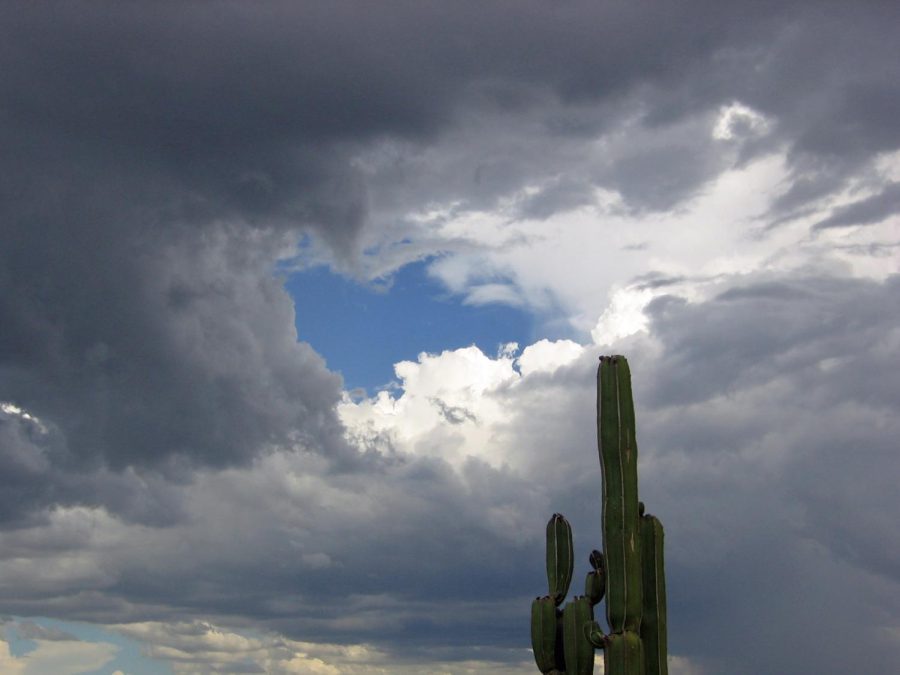Will El Niño produce a wet and cooler Arizona monsoon season—it’s complicated
May 19, 2023
With summer approaching and temperatures already sweltering, Valley residents eagerly await this year’s monsoon rains that bring relief from the scorching heat.
This year, the potential influence of El Niño on Southwest weather patterns has sparked hopes of a heavy monsoon season. This would be following up a historic 2022 winter season, which produced the largest snowshed and rainfall our state had seen in over 30 years.
El Niño, a part of the El Nino/Southern Oscillation (ENSO) pattern, is known for its significant impacts on global weather systems, especially shifts in sea surface temperatures and wind patterns in the Pacific Ocean. El Niño is typically associated with warmer sea surface temperatures, whereas it’s counterpart, La Niña, is more associated with cooler sea surface temperatures.
In March, the National Oceanic and Atmospheric Administration (NOAA) declared the official end of La Niña, as sea surface temperatures continue to rise. Currently we are in a “neutral” ENSO phase but some experts think El Niño is well on its way. For those in the American Southwest, this could produce a stronger than average monsoon season.
According to a recent forecast by the Climate Prediction Center (CPC), there is a “80% chance of at least a moderate El Niño” developing by the end of the year. Under neutral ENSO conditions, the Eastern Pacific experiences cooler and drier weather, while the Western Pacific receives more rain and thunderstorms.
However, during El Niño events, warmer sea surface temperatures shift from the Western Pacific to the Eastern Pacific, altering wind patterns and increasing rainfall in the Americas.
Arizona’s monsoon season, which typically begins in July, is expected to experience some uncertainty due to the potential effects of El Niño. While some climate experts suggest that El Niño events can cause a delay in the monsoon seasons onset, it also raises the possibility of increased rainfall if Eastern Pacific tropical storms track northward and impact the region. The moisture brought by these storms may contribute to above-average rainfall during the monsoon season.
However, it can be noted that previous attempts to forecast the effects of El Niño have struggled with accuracy. Historical data from Tucson for example, indicates that the correlation between monsoon precipitation and El Niño is somewhat unclear. In fact, approximately 73% of the total events analyzed from 1957 to 2006 resulted in average or below-average precipitation for Tucson during El Niño-related monsoon seasons.
As weather experts continue to monitor the situation, the question of whether El Niño will supercharge the East Pacific tropical storm season for 2023 remains unanswered. The official National Hurricane Center forecast is yet to be released, and even if it predicts an active season, it does not guarantee direct impacts on Arizona.
On an optimistic note, Valley residents have noticed an unseasonably wet and windy May this year, which brings hope of an even wetter and cooler rest of the summer.


